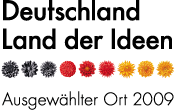Force-induced destabilization of focal adhesions at defined integrin spacings on nanostructured surfaces
12-May-2009
The American Physical Society, 2010, DOI: 10.1103/PhysRevE.81.051914, 7 pages published on 12.05.2009
Focal adhesions are the anchoring points of cells to surfaces and are responsible for a large number of surface sensing processes. Nanopatterning studies have shown physiological changes in fibroblasts as a result of decreasing density of external binding ligands. The most striking of these changes is a decreased ability to form mature focal adhesions when lateral ligand distances exceed 76 nm. These changes are usually examined in the context of protein signaling and protein interactions. We show a physical explanation based on the balance between the forces acting on individual ligand connections and the reaction kinetics of those ligands. We propose three stability regimes for focal adhesions as a function of ligand spacing and applied stress: a stable regime, an unstable regime in which a large fraction of unbound protein causes adhesion disintegration, and a regime in which the applied force is too high to form an adhesion structure.











